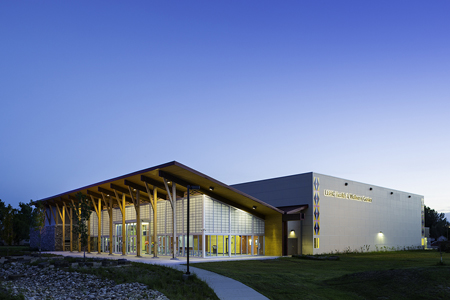I recently had a chance to catch up with longtime Travois partner David Small, dean of administration at Little Big Horn College. We talked basketball, climate change adaptation and online learning among other topics.
The conversation touches on a range of topics relevant to higher education and economic development in Indian Country. The following Q&A summarizes our conversation and has been edited for length and clarity.
What recent changes have you seen in your student population at LBHC? The recent economic downturn and the oil boom in the Northern Plains has presented a challenge for all community colleges. We need to make the case to young people that developing their skills is as important or more important than the economic opportunities presented by oil and gas.
What is LBHC’s strategy for making higher education more accessible to the changing student demographic? We now have high-speed internet access in our community. Our college is truly online now. We want to expand our online capacity and online coursework. This will help us get more students and increase enrollment. We will also be able to provide services to students through smaller learning centers in communities that are remote from the LBHC campus across the reservation and in Billings. In order to do this, we will implement solid policies and procedures to maintain institutional culture and high standards as we go online.
Athletics have always been an important part of campus culture. What is happening on the basketball court this year? Our athletic program is humming along. We have a new health and wellness director and athletic director. We are considering adding cross country to build on our good basketball tradition. Successful athletics can be a good way to bring young people to the campus to watch sports and get them interested in joining LBHC as students after high school.
What kinds of changes are happening with your established, long-standing programs? LBHC has always had an agriculture program. We are now working with partners to expand and upgrade those offerings. We also think we can expand the scope to include land conservation. We are taking a close look at the science of climate change adaptation and studying those impacts. We are looking at what is happening to Alaska Native communities and coastal tribes affected by this. It also affects inland tribes. We need to see what plants will survive in hotter climates and drought conditions. We want to do a climate impact assessment starting at the tops of our mountains, going down through our riparian areas and into our riverbeds. Once we collect that data, we can start hooking it into economic development and resource management plans.
What new programs do you see on the horizon? We are in the process of development a vocational and technical center to handle a number of programs around established technical professions. We also want to look forward, however, to help people become solar, wind and hydropower professionals. We are already building a green campus. But we want to give our students something they can use so we can get to the point as a nation that we are earning more revenue from our alternative resources and looking at coal as a secondary resource. We want our students to be thinking about what we will leave our children and grandchildren.


